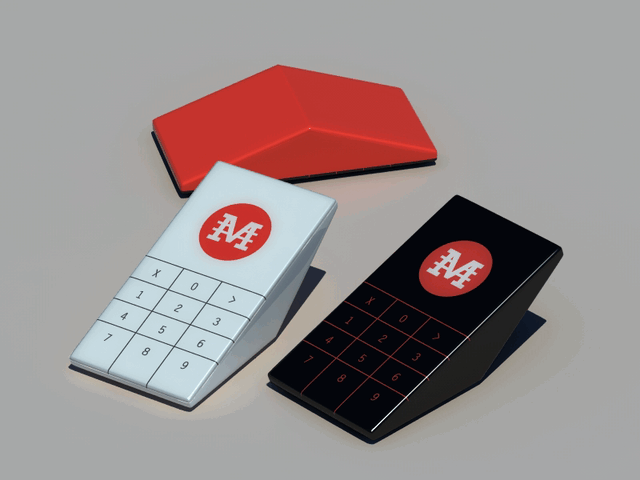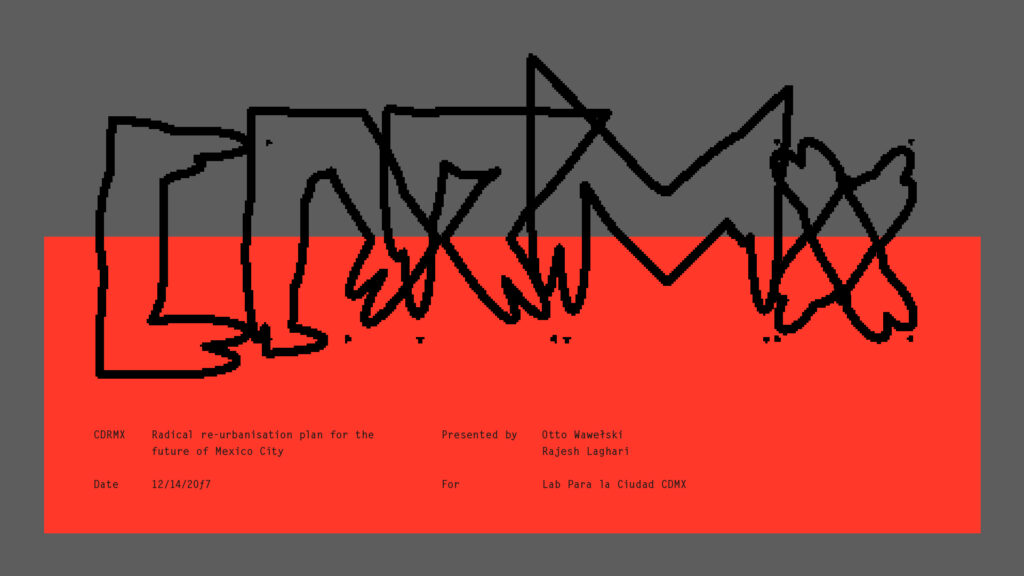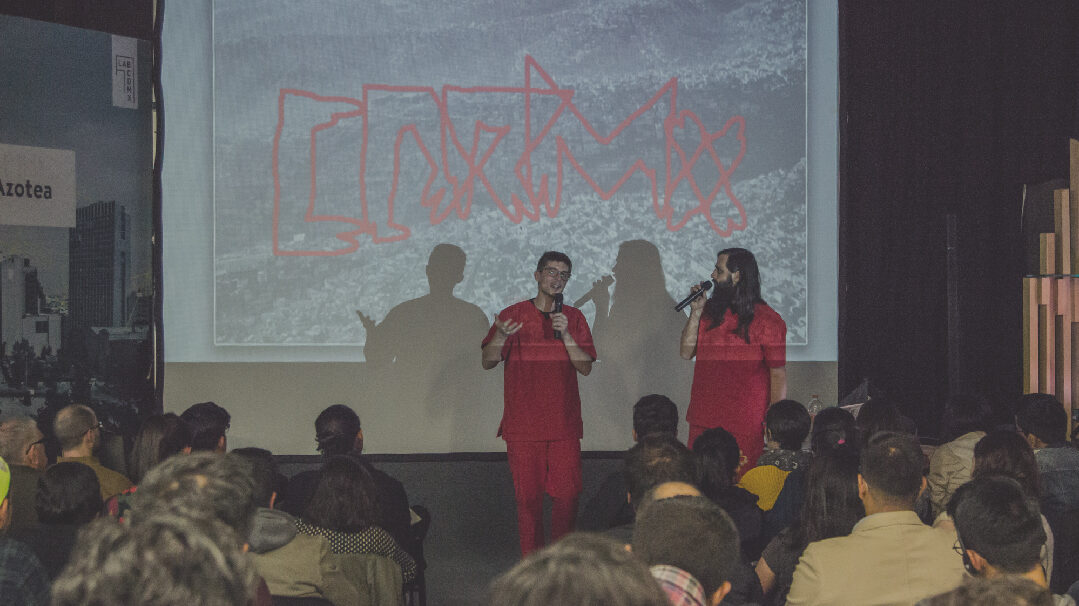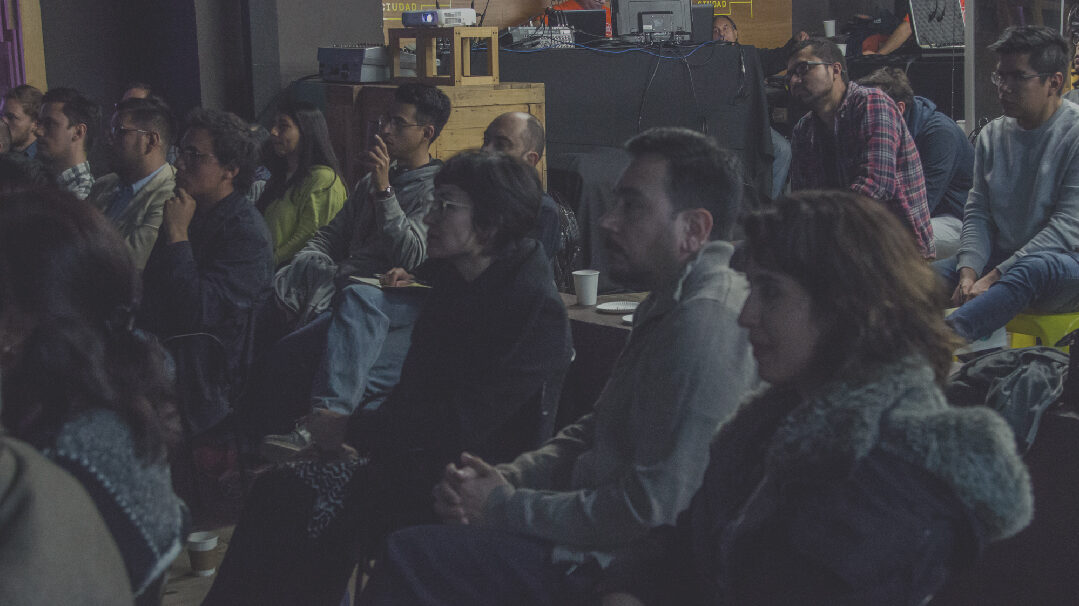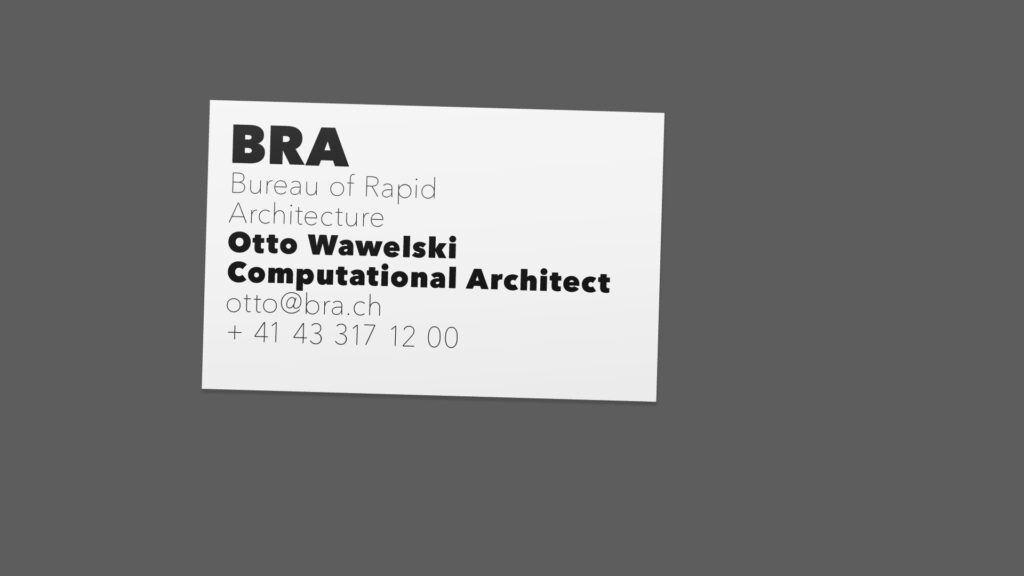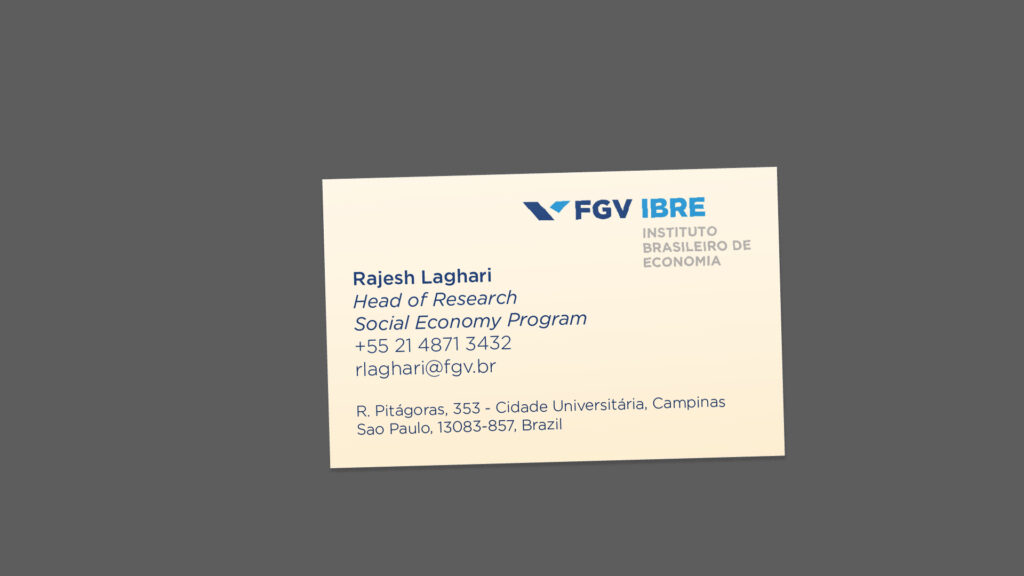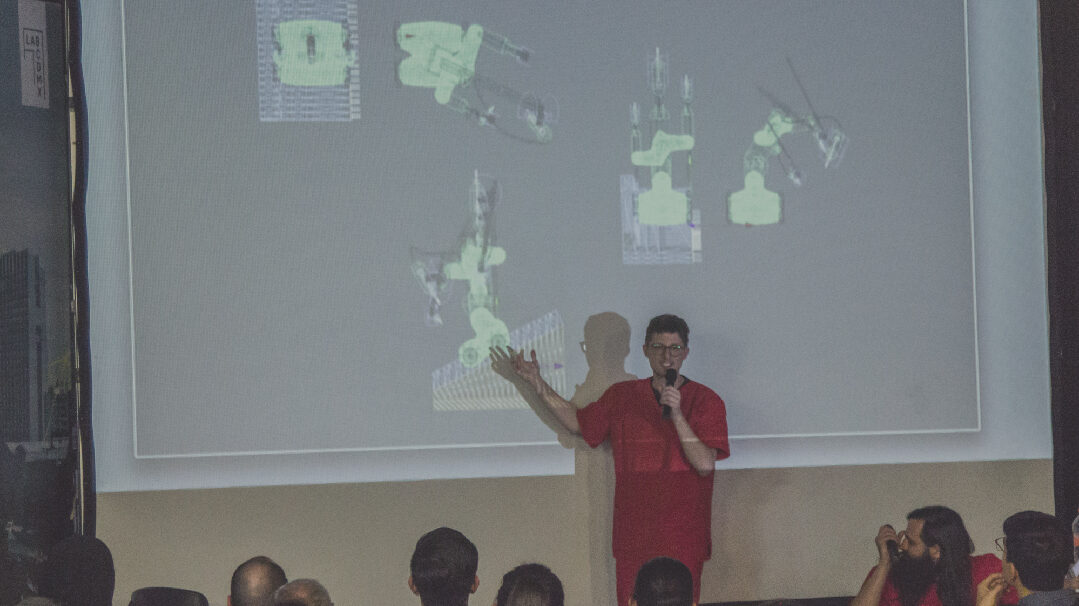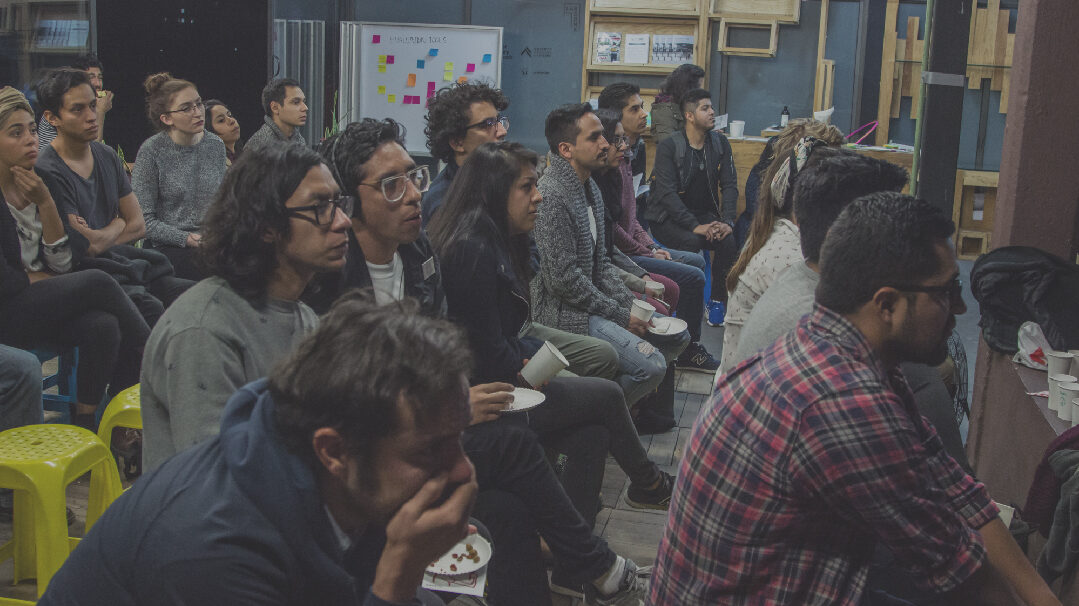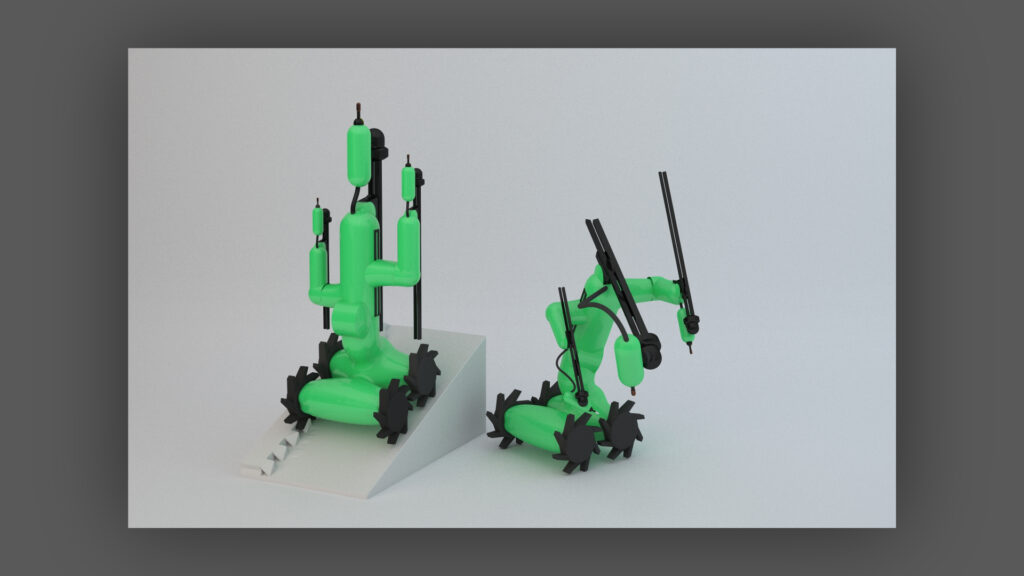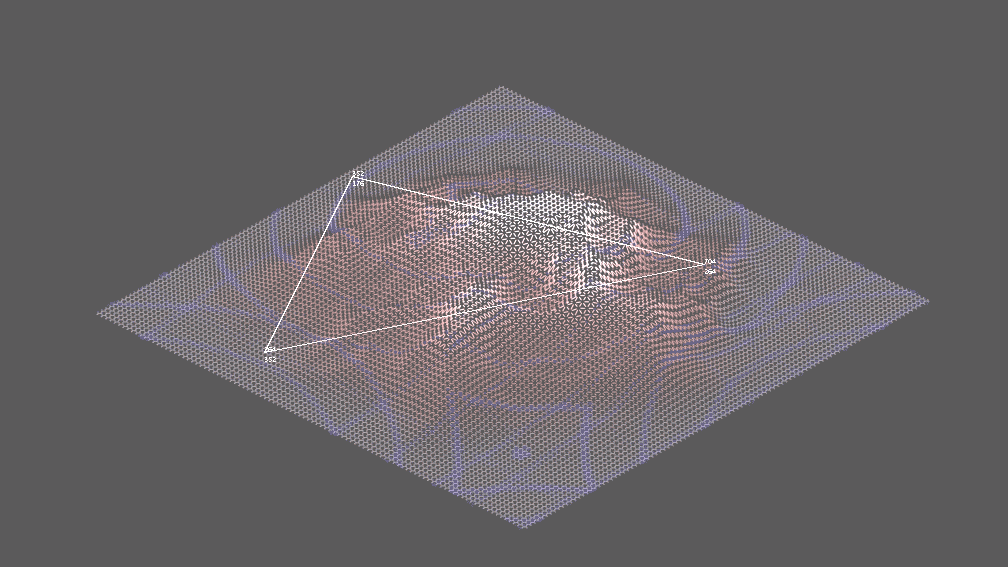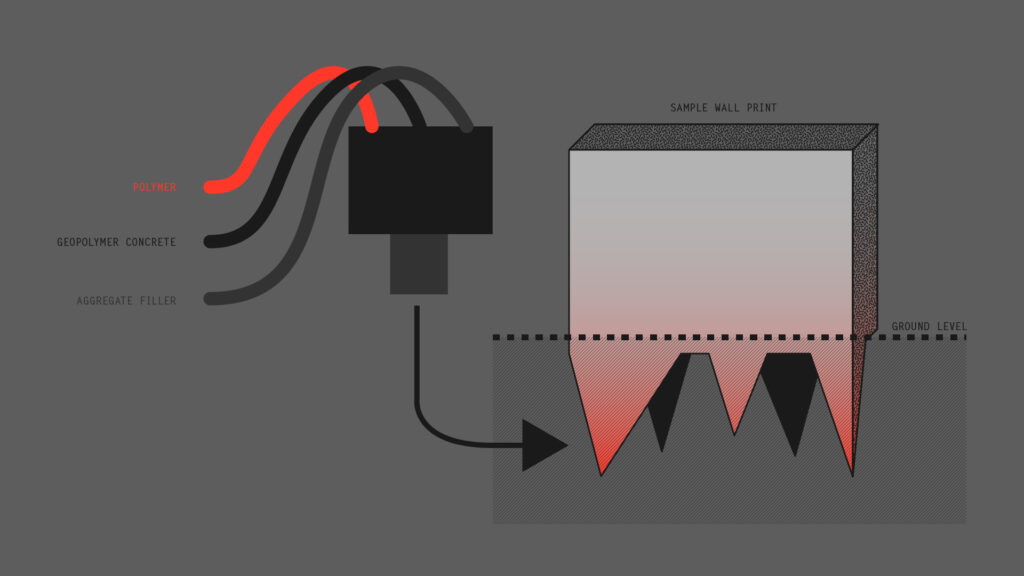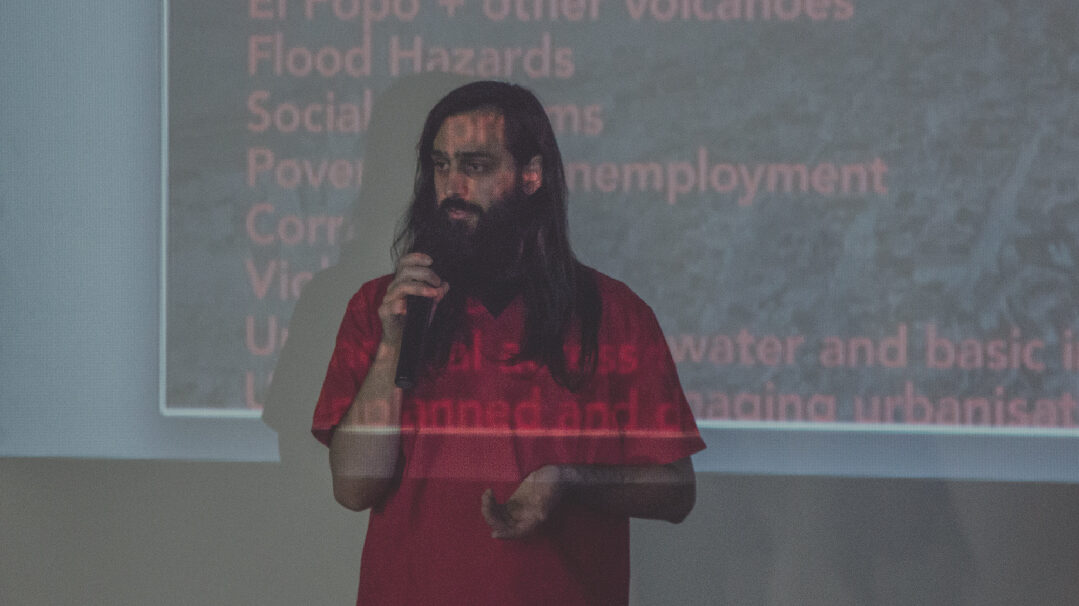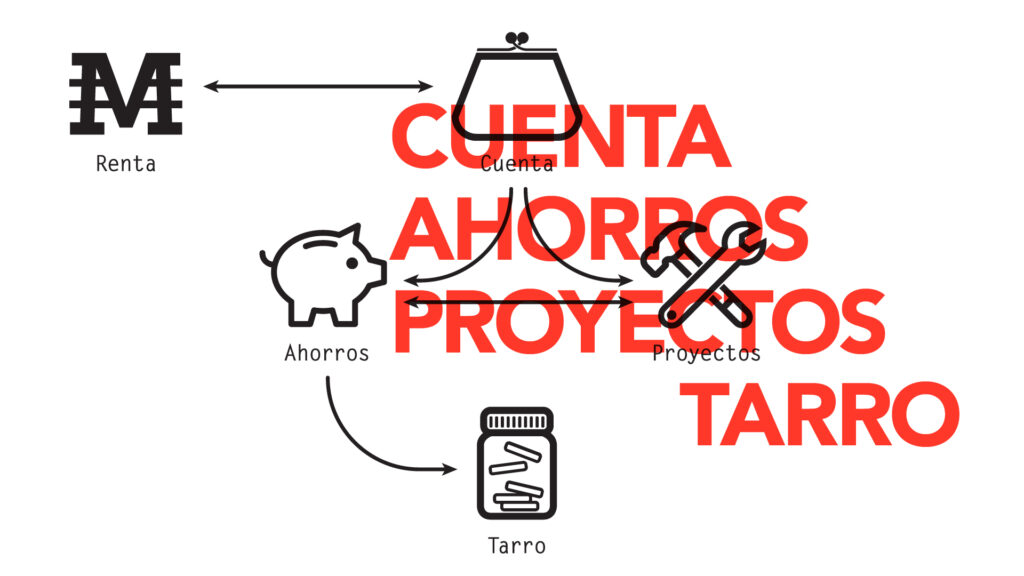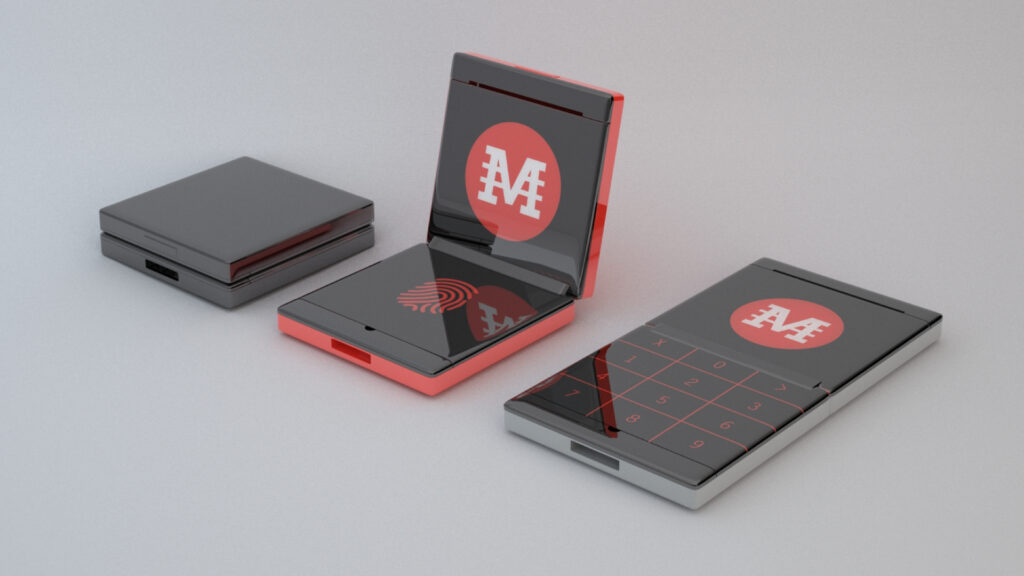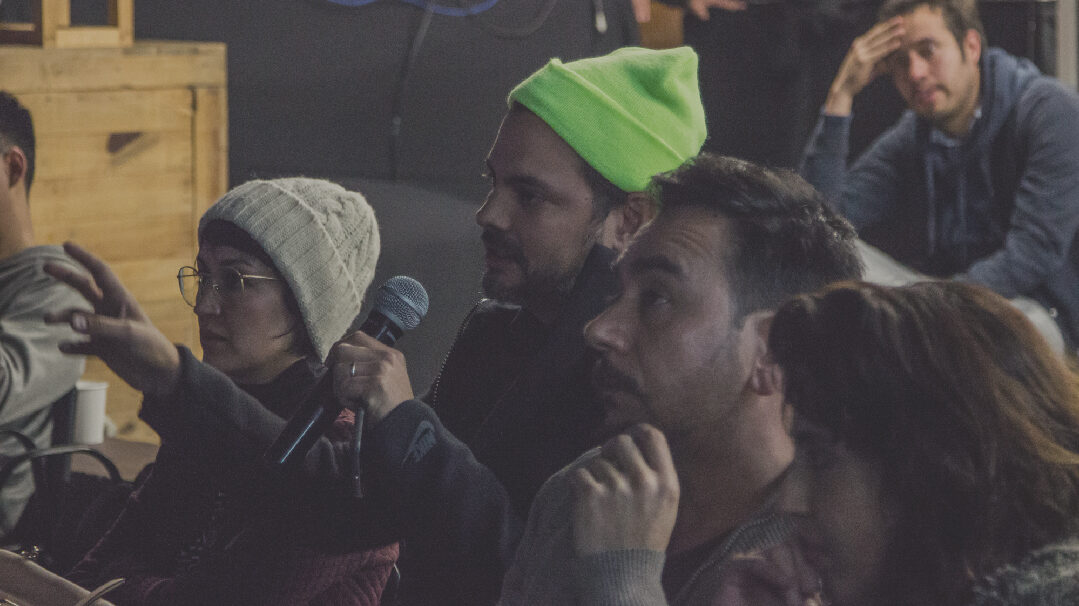In December 2017, we were invited in Mexico City by LabCDMX to discuss and imagine the future of the city, and of one neighborhood in particular: Xochimilco. Registered as a UNESCO World Heritage Site, the area is home to the last Aztec canal gardens or chinampas, cute salamanders known as axolotls, but more importantly: some of the few remaining bits of exposed water from what used to be a massive system of canals and lakes over the Valley of Mexico.
Our presence being limited to an evening of lecture and a day of design fiction workshop, we decided to turn our initial intervention into a fiction. This is how we ended up presenting CDRMX, an ambitious relocation project based on the work of Mexican architect Alberto Kalach, combining autonomously 3D printed housing and universal income distributed in a new, local, self-devaluing cryptocurrency.
A. The Fictional Public Talk
There is no denying that Mexico City as it is today — built on a depleting lake, severely lacking drinking water, slowly sinking in its own aquifer, one of the most polluted urban areas on the planet and, as if that wasn’t enough, surrounded by volcanoes and regularly suffering from earthquakes — is in a state of constant emergency. There is mounting evidence that the only path to preserving the city from an ecological collapse is to reclaim its original lake by, for instance, massively relocating its citizens to the hillsides.
And so once on stage as representatives of the fictional "CDRMX", we claimed our ongoing radical urbanization was doing just that. And that we received an all-too-believable impulse from SpaceX which saw in the local challenge a "perfect pilot program" to test out human settlement on Mars.
Autonomously 3D Printed Anti-Seismic Habitat
The engineering part was taken care of by the team led by Otto Wavełski who, as founder of the Bureau for Rapid Architecture, has a history of successfully printing housing for disaster relief. They developed a machine that can autonomously print whole districts in one block, including infrastructures like roads, water and electric networks, using clay from the lakebed and rubble as main ingredients.
Basic Income in a Self-devaluating Cryptocurrency
We also needed to provide an incentive for relocation, as opposed to forcing residents out of their homes, in a way that is not subject to the endemic corruption. With his team, social economist Rajesh Laghari imagined La Renta, a new form of universal income paid monthly in a local cryptocurrency — the Mexicoin — on a special ecosystem of three accounts with different properties, the combination of which aims to make capitalisation inefficient, pushing instead for investments in a local, participative economy system.
Audience reactions ranged from absolutely obfuscated to ready to move in, with little in between. We took questions, and only through a second lecture did we reveal the fictional nature of the project. This allowed us to explain our approach and present our work as a design fiction collective, and introduce the basis for the workshop.
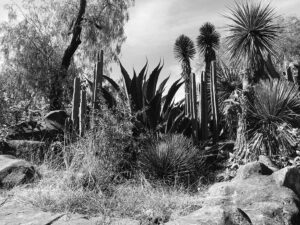
B. A Creative Roleplaying Session to Extend the Worldbuilding
Using our public talk as fictional backdrop, we hosted a workshop in the form of a citizen assembly, one that would take place prior to relocating the residents of the Xochimilco borough. Participants were split in two groups: the politicians — half conservative and half progressive, whose duty was to present projects befitting their ideology, and convince others of their adoption — and the citizens — who were initiating grassroots projects and had the power of voting for one or the other political program. Hidden within them were 'Los Cryptos,' an undercover mafia group shooting for personal profit over any specific political agenda. This process eventually gave birth to four different projects.
Regenerative Floating Markets
Forced out of immobilism by a lack of electorate, the conservatives proposed to preserve Mexico City as is, with only a few modifications: some avenues that had been built over the ancient lakebed were to be reclaimed as waterways for a new floating market hailing from Xochimilco. This prompted a competition for the most innovative floating businesses, perpetuating the local tradition of trajineras and giving rise to regenerative smoothies, floating parks, and vertical orchards.
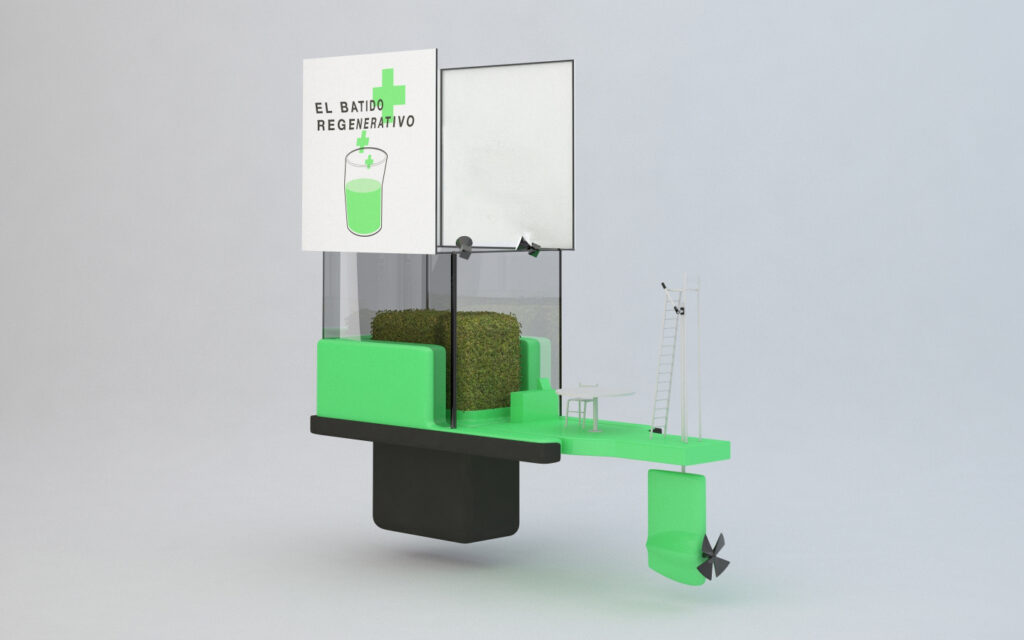
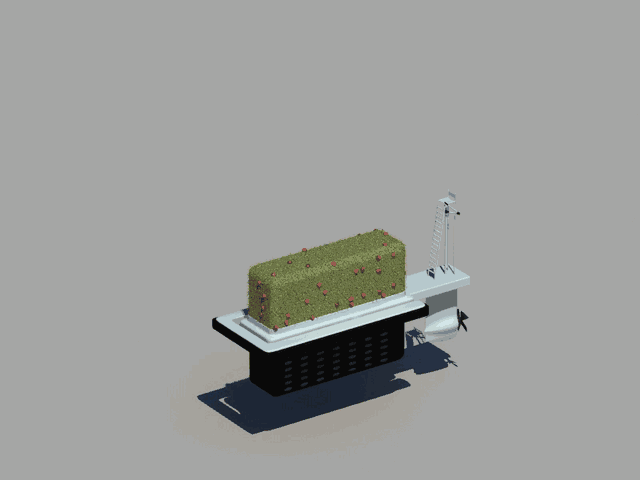
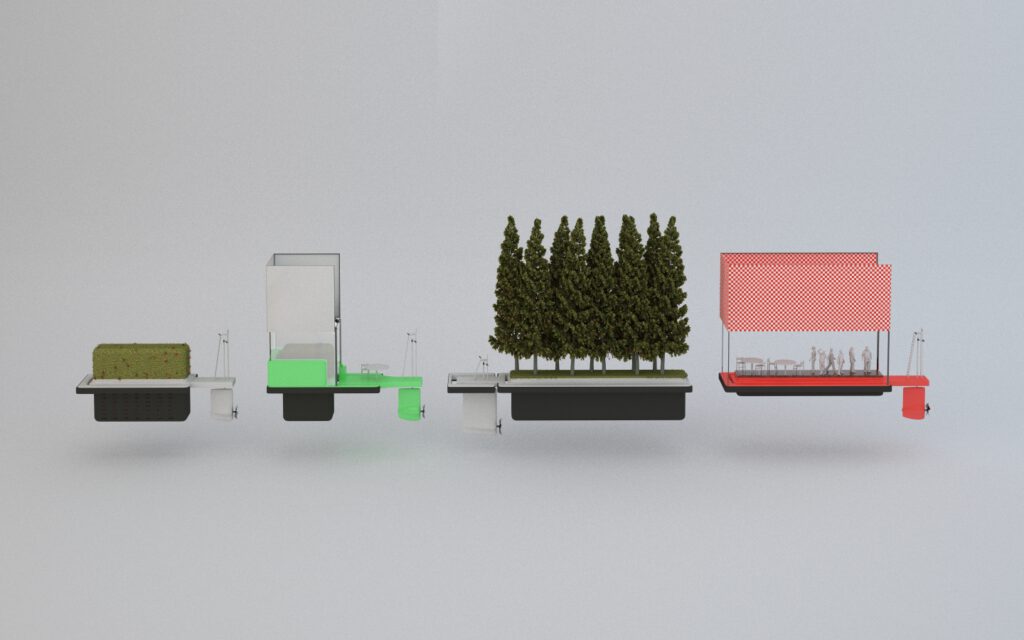
AI-powered, Incorruptible Governance
The citizens decided to push the local cryptocurrency experiment one step further, with an attempt at establishing the roots of distributed democracy — a new political system relying not on an easily corruptible voting process, but on a big data analysis of daily patterns, from global consumption habits to the autonomous detection of satisfaction levels depending on geolocation. Resulted a party of dummy candidates yielding their public life to the machine.
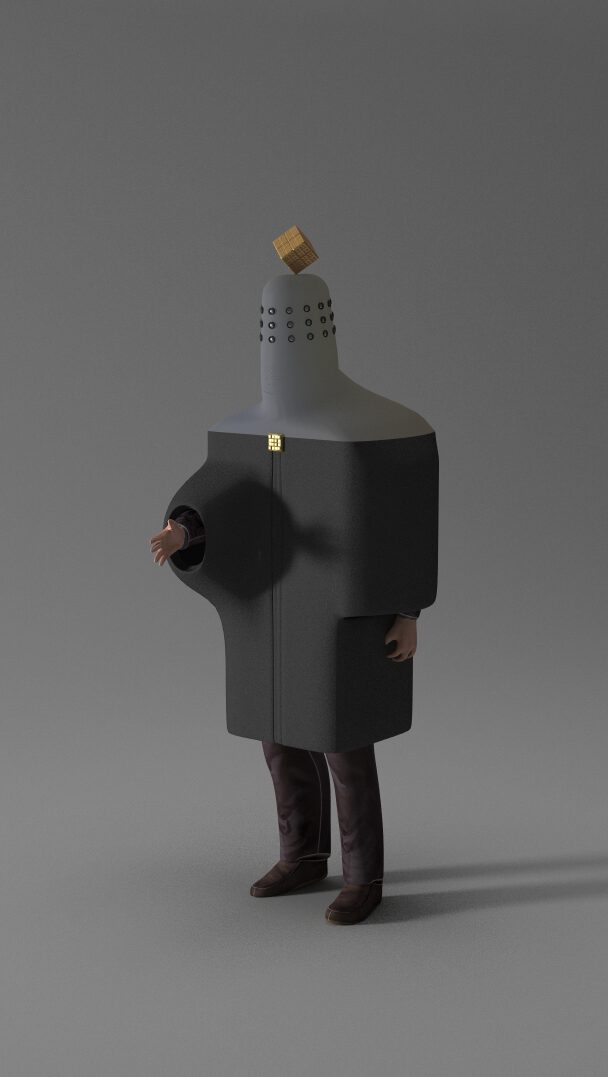


Copy-paste Approach to Architectural Printing
With a desire to preserve their neighborhood history and, just as importantly, their personal stories, the LabCDRMX started a city-wide building scan program, generating an archive of textures and reliefs to be reprinted in the freshly built districts. The process, however, involved resolutions too low to capture all the details, and gave birth to new low-definition architectural aesthetics.
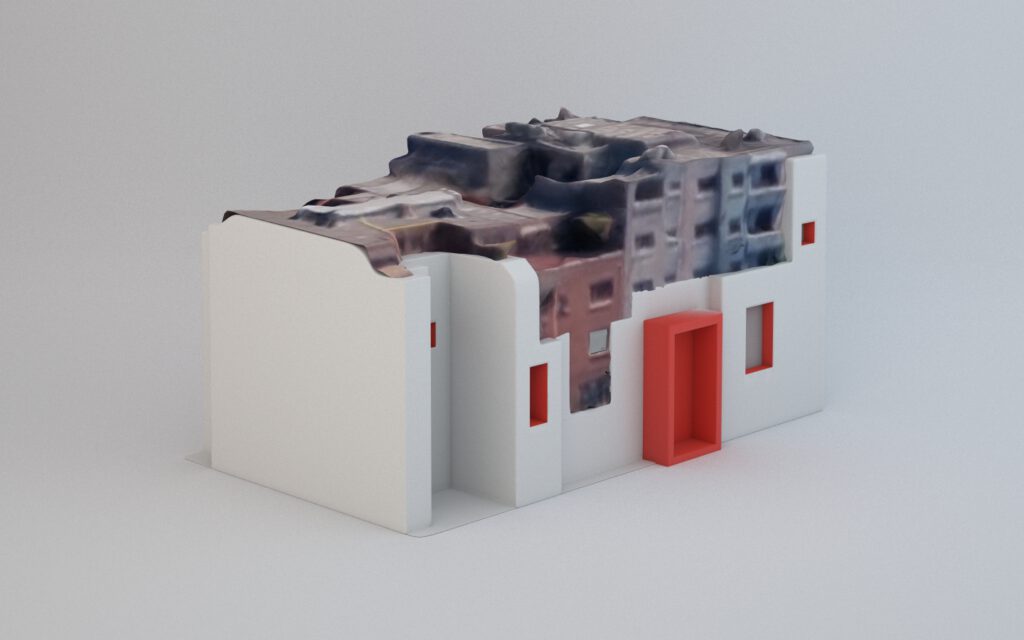
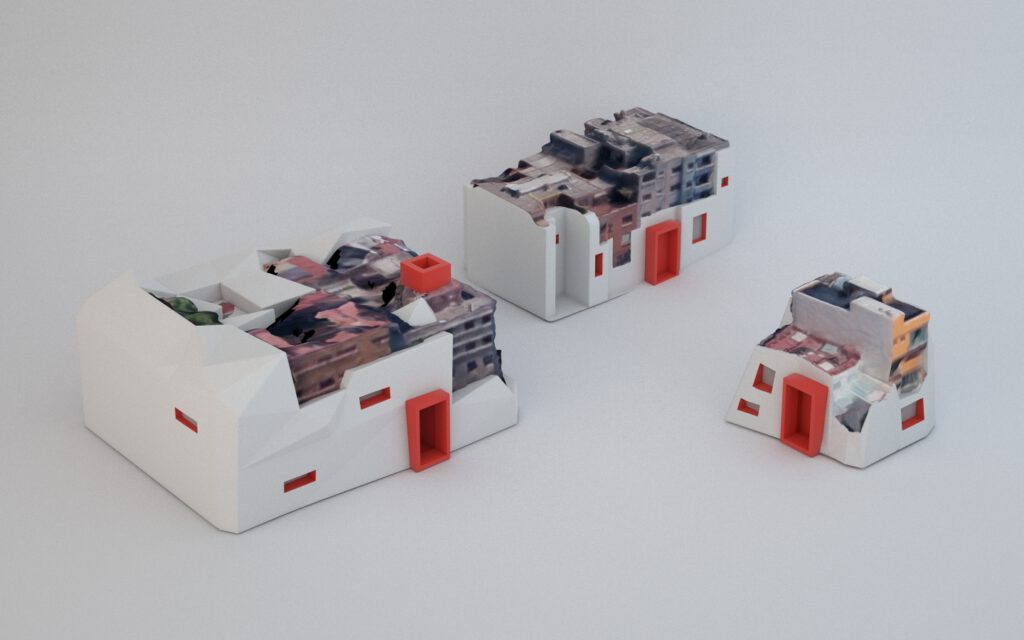
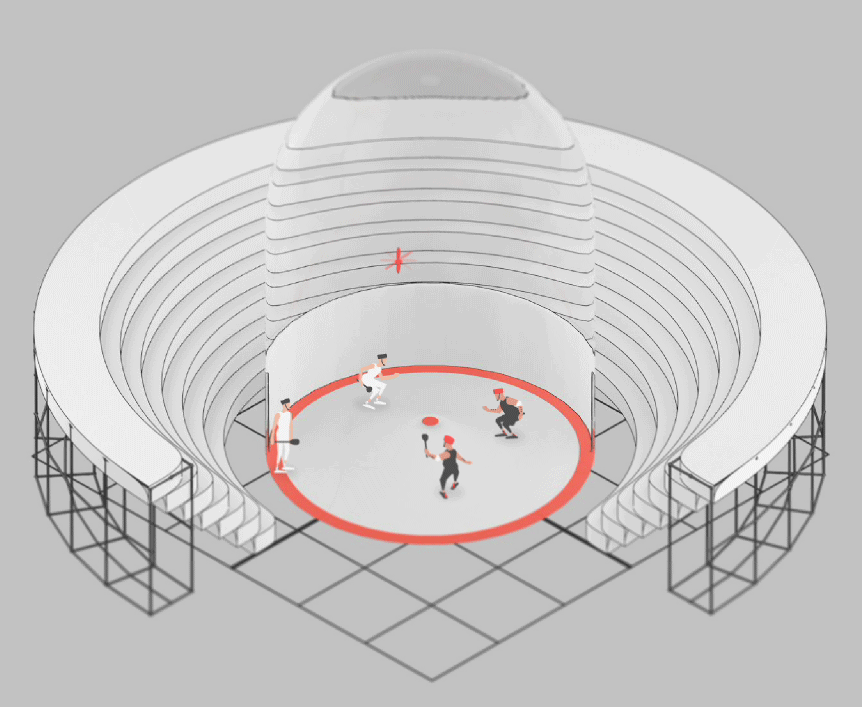
Cryptoball, a Sport Born Out of a Devaluating Cryptocurrency
In the shadows, Los Cryptos started a monthly hacking intervention: on the night when la Renta falls to zero, groups of citizens compete for the detention of ball spilling out Mexicoins at a steady rate to whoever holds it, for as long as they hold it. The practice eventually evolved into an official sport — Cryptoball — where two teams attempt to hit a sort of shuttlecock for it to go as high as possible, the last person to touch it scoring points until the opposing team gets a hit.


Special Thanks to
Alejandro Ruiz, Clorinda Romo, Brenda Vertiz, Gabriella Gómez-Mont, & Friends at labCDMX that made this project possible, and very fun.
